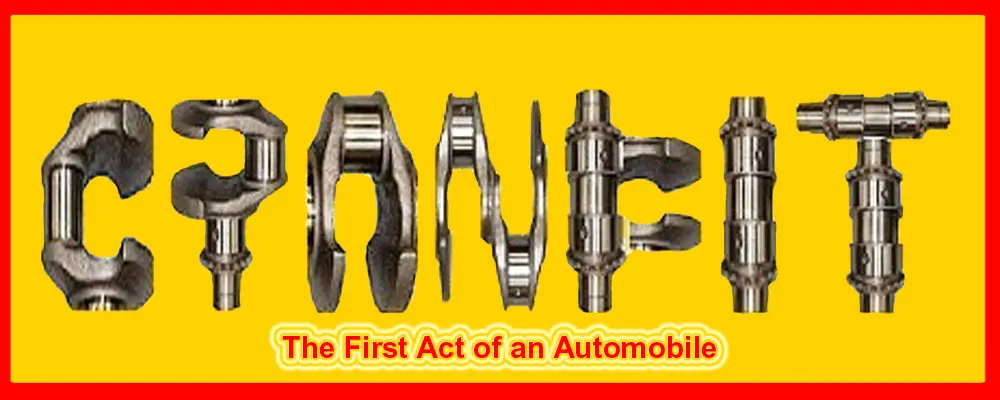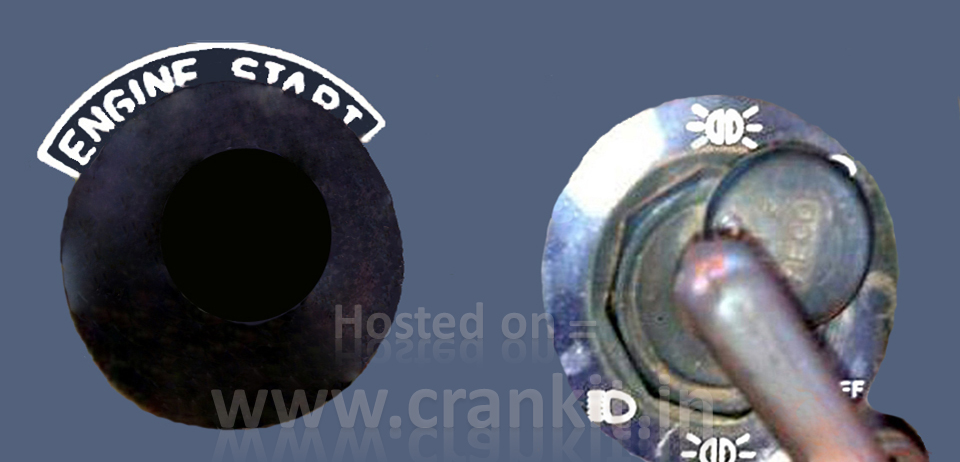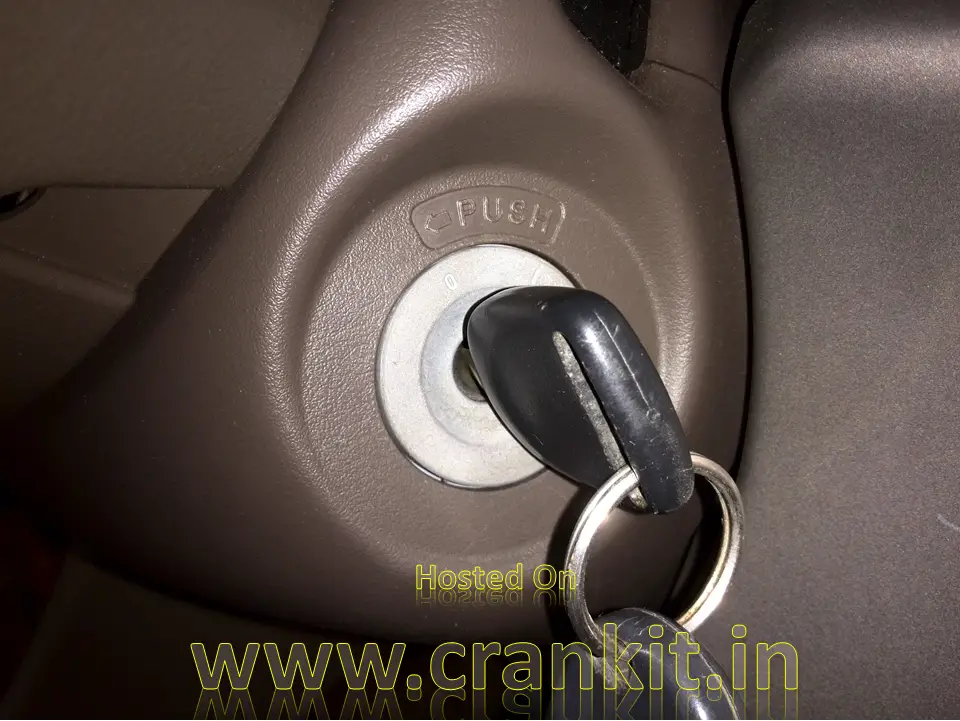Did you know: Cranking is the first action in an automobile engine?
What is Cranking:
When we think about an Automobile, the word is a combination of ancient Greek & Latin words. The term ‘autos’ means ‘self,’ and ‘mobilis’ means movable, which simply means that it’s a machine that moves by itself. Automobiles, especially cars, have come a long way since their inception. In order to get an engine running, it first needs to be rotated at sufficient speed. Thus, it gets the fuel pumped up to the cylinders and ignited and enables the engine to run on its own power. Cranking the engine simply means turning the crankshaft that rotates and powers itself.
The mechanisms used for cranking the engine are:
1. Push Start (only in case the routine procedure fails!)
2. With a Cranking wheel
3. With a Cranking Handle
4. With an Electric Starter
5. With a Starter Motor with a Floor Mounted Push-Lever Mechanism
6. With a Starter Motor with a Push Button
7. With a Starter Motor with Ignition Switch
8. With a Remote Engine Starter & Start-Stop Button
Evolution of Cranking mechanism:
1. Push Start or Desi “Dhakka Start”:
Firstly, push-start means starting the vehicle by pushing it from behind and engaging gear when it gets some speed. Thus, the wheels transfer their motion to the engine in the reverse order for cranking. Therefore, starting vehicles with a manual gearbox is common when its starting mechanism fails. Although, it is not a regular practice as it requires other people to push. However, it is beneficial, mainly when the battery discharges.
2. Cranking Wheel:
Secondly, in the nineteenth century, all the automobile components were pre-dominantly mechanical in nature and operation when automobiles were in their infant stage. There was no generation and storage system of the electric current back then. Thus, people could not use it as there were no means to power different electrical instruments as there were none. Hence, the duty of cranking the engine was with its mechanical components.
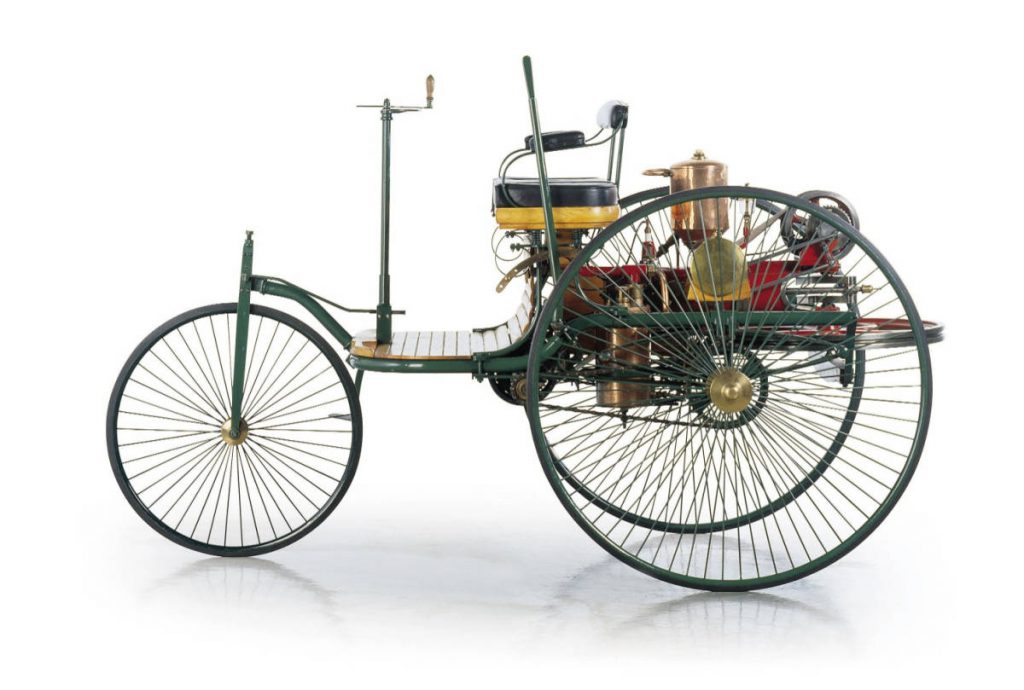
The Benz Motorwagen – Most people regard the light carriage for personal transport as the ‘World’s First Automobile,’ produced way back in 1886. The Benz-Motorwagen was a simple three-wheeler with a single-shaft handle to steer the front wheel. A horizontally mounted Benz 954cc, single-cylinder, four-stroke engine powered it with 2⁄3 horsepower (0.50 kW) at 250rpm. This tiny single-cylinder engine had an ‘open-crankcase’ design supported by a bigger flywheel. The flywheel also acted as a ‘Cranking Wheel’ to rotate and start the engine since there were no electric starter motors back then.

Watch here world’s first automotive engine running:
3. Cranking Handle:
As the automobile industry started evolving, the innovations replaced old technologies. The internal combustion engines became more sophisticated, which featured a ‘closed’ crankcase. Most of the engine parts such as connecting rods, counter-weights & the flywheel itself found their place inside a ‘flywheel housing’ in the ‘closed crankcase’ construction while the engine itself got under a closed hood/bonnet. As a result, the flywheel became inaccessible. Hence, the closed-hood did not provide enough space to rotate it from the inside of the engine hood.
Thus, it resulted in the modernization of the cranking method/s with the help of an external cranking mechanism. So, it bypassed the need for cranking by rotating the flywheel from the backside of the engine. Instead, the manufacturers provided these cars with a cranking mechanism; incorporated at the front side of the longitudinally mounted engine. This mechanism was simple – a metal bar bent at 90° at two points formed a ‘Cranking Handle.’
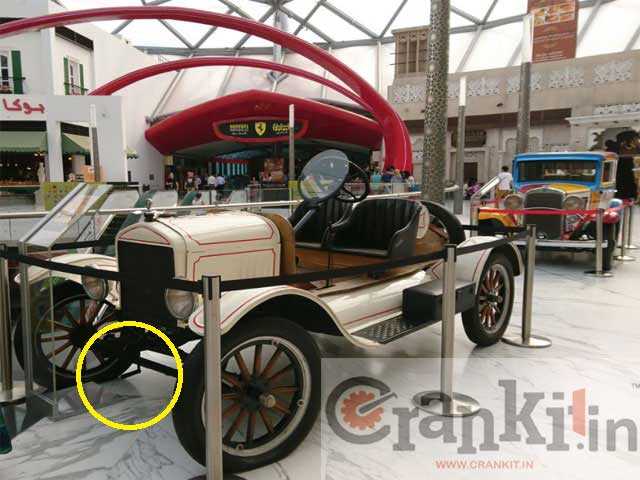
All vehicles in that era used to have a cranking handle to start the engine. The driver needed to ‘hand-crank’ the engine in order to start it. First, the driver would insert the crank handle thru’ a hole provided at the bottom of the front grill. Then s/he would rotate the handle clockwise as seen from the front. In India, many earlier generation cars in the 1950s used cranking handles. Ambassador Mark II was one of the cars available with a cranking handle in the 1960s.

4. Electric Starter:
According to “Motorera,” the self-starter originated because of a mishap in 1910. A Cadillac car, which a lady was driving, stalled on a bridge on Belle Island, Michigan. Since she did not have enough strength to hand-crank the engine herself, she waited until the help arrived. Meanwhile, Byron T. Carter, also driving a Cadillac car, was passing by the road. He happened to be a close friend of Henry M. Leland, who was the head of Cadillac at that time. Carter offered his help to start the woman’s car. While doing so, the woman forgot to retard the spark, and the engine backfired. The crank handle flew off and struck Carter in his face. Thus, it broke his jaw, and later, he died.
However, this incident saddened Henry M. Leland, the head of Cadillac. He asked his engineers to find a safer alternative to the Cranking Handle. When the Cadillac engineers could not find a solution, Cadillac invited Charles F. Kettering of DELCO to resolve the issue. Kettering invented the first practical electric starter in 1911 and filed for a U.S. Patent. Later, Cadillac first installed the electric starters on its Touring production models in 1912.
5. Starter Motor with Floor Mounted Push-Lever Mechanism:
Incidentally, until around 1949, drivers operated the starter by foot with the ‘Floor Mounted Push-Lever’ mechanism. Its location was on the floor, near the accelerator pedal.
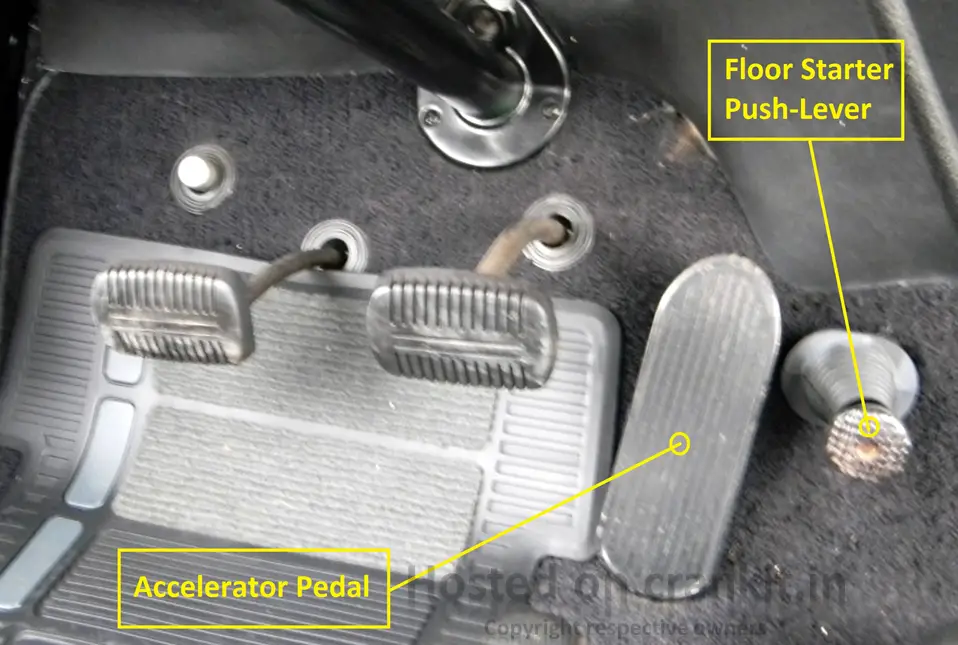
However, starting a car with the floor-mounted cranking push-lever was quite tricky. Drivers had to operate it with their left foot on the brake pedal, the heel of the right foot on the accelerator, and the toe of the right foot pushing the starter lever.
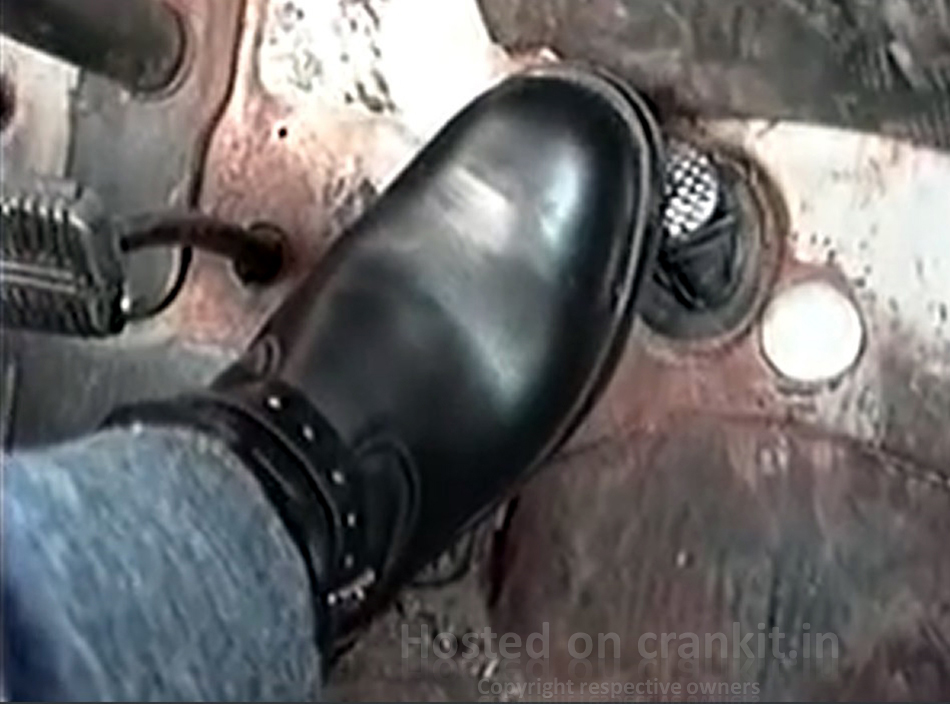
6. Electric Starter with a Push Button:
Later, an electric push-button with a simple Ignition Key mechanism replaced ‘Floor Cranking Push-Lever.’ Finally, engineers moved the system to the Dashboard. Thus, making it convenient for drivers to start the engines. This system was quite user-friendly. Hence, Indian commercial vehicles used it for quite a long time as it was simpler to make and cost-effective. Many State-Run Transport Buses featured this technology.
7. Electric Starter with an Ignition Switch:
Thus, the invention of an “Ignition Switch” with “self-retracting ability” changed how cranking the engine from the 1950s till mid-2000 would be. Besides, Chrysler Corp. offered a combination of key-operated ignition and Starter Switch in 1949. Ignition switch combines the security locking mechanism of the steering in many modern vehicles. Even though the ignition switches & starter motor came into usage way back in the 1950s, the Cranking Handles still existed on many cars as late as in the 1970s.
8. Keyless Ignition with Engine Start-Stop Button:
Furthermore, newer generation cars employ this technology. The Remote Keyless Ignition system (RKI) coupled with Engine Start-Stop Button replaced the conventional ignition switch, which now cars use to start the engine. As a result, you can start some modern-day cars with Remote Keyless Ignition systems just by the push of a button.
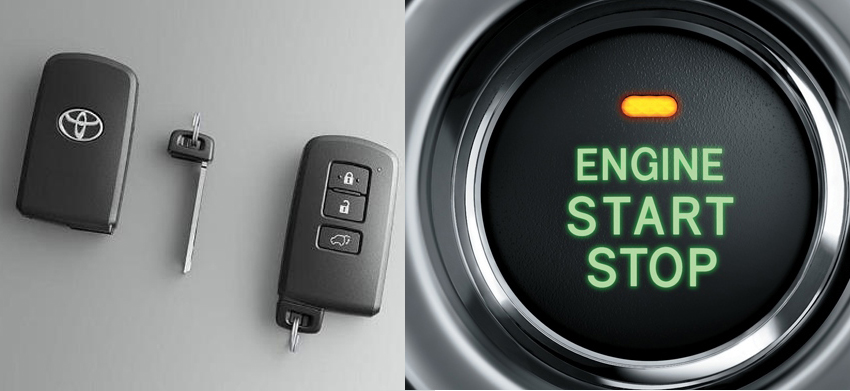
Future of Cranking: Computerised “Voice Activated Command Control”?
Currently, the voice-activated commands limit their use to operate the infotainment systems in the cars. At the moment, with this feature, one can only operate limited features such as a music system, navigation, and a mobile phone, to name a few. However, engineers develop new techniques using advanced technology to operate more car features over drivers’ commands. So, possibly, the mobile phone’s apps could also pass on the voice-activated commands in the future.
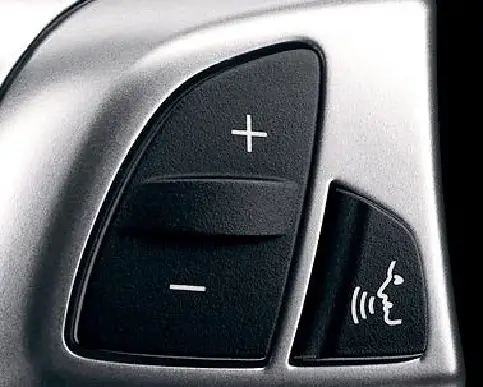
The future is quite unpredictable as innovations keep happening around the automotive systems. For example, a Hollywood Movie, “2012,“ showed cranking the car’s engine and starting it with the ‘Voice-Authenticated-Engine-Start’ feature of the Bentley. However, we could not confirm the existence of such technology on Bentley’s website; this type of biometric system may likely take over in the future. Furthermore, we may find more ‘Talk-To-Tech’ systems in the next generation of cars we have to wait and see.
Watch voice command in action, here:
Read More: Automatic Start-Stop System
